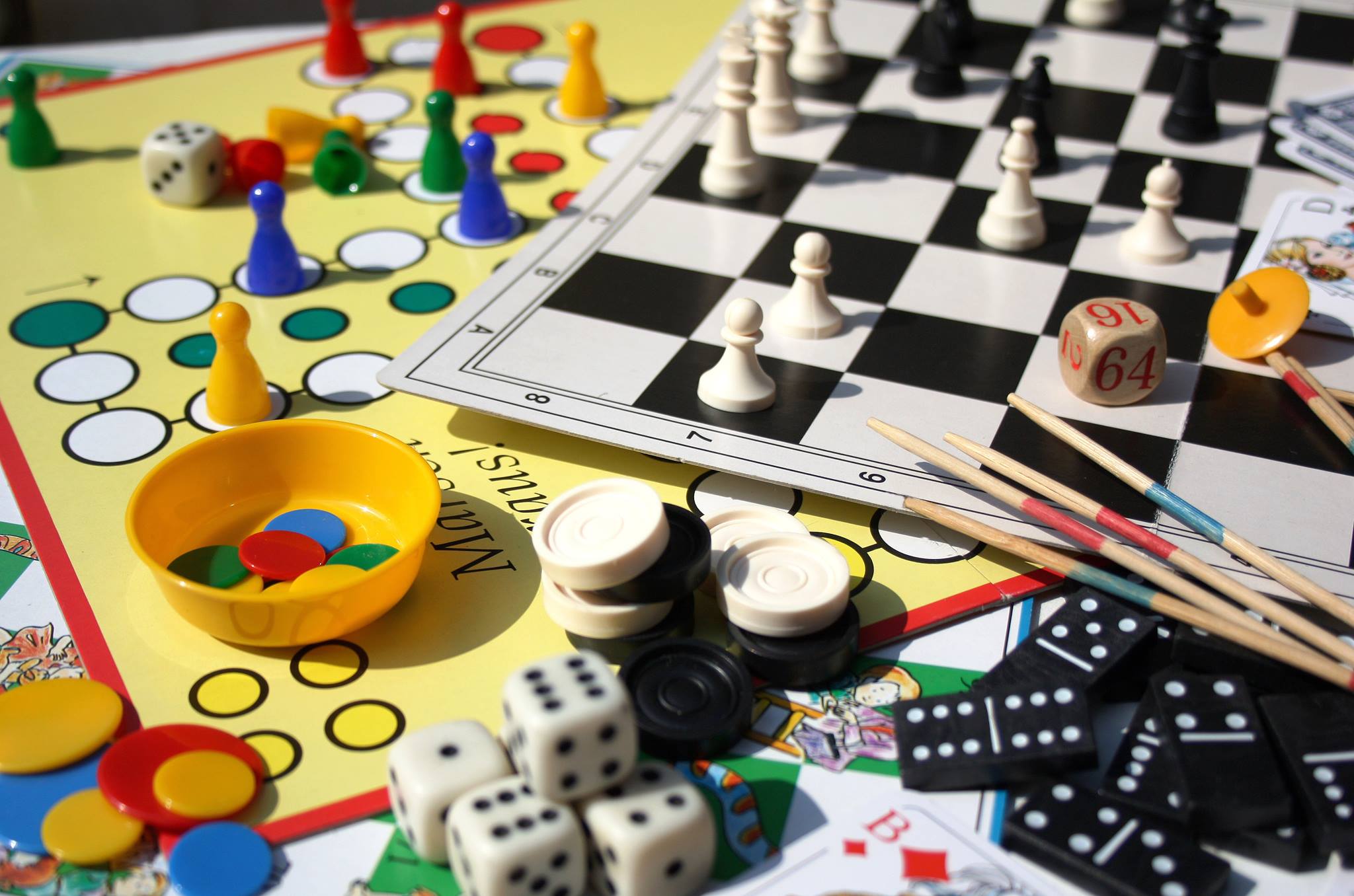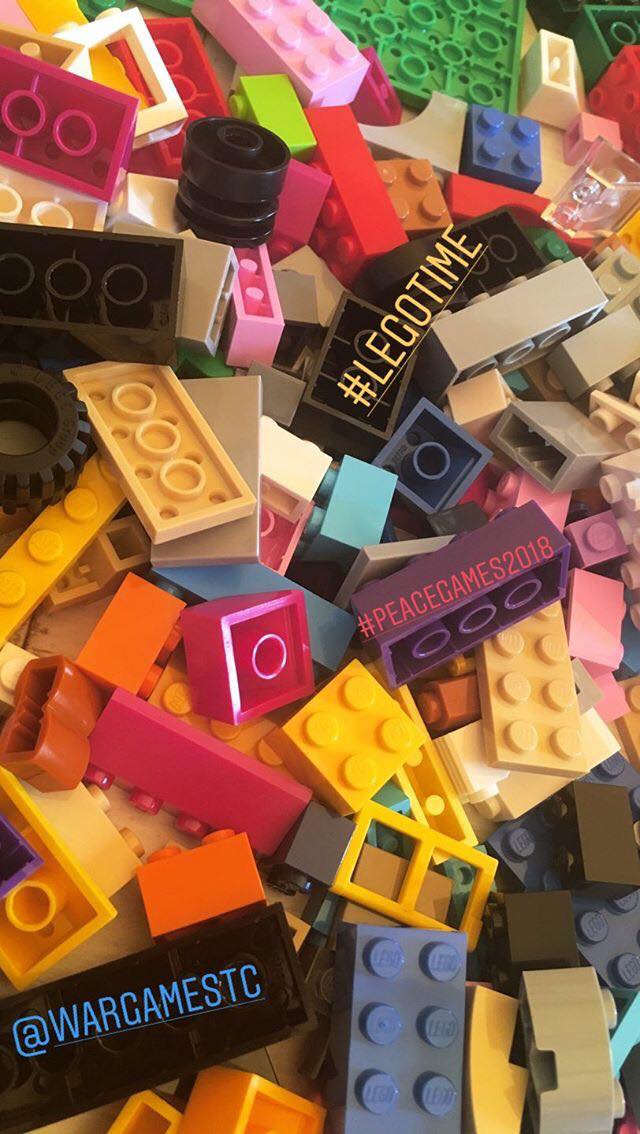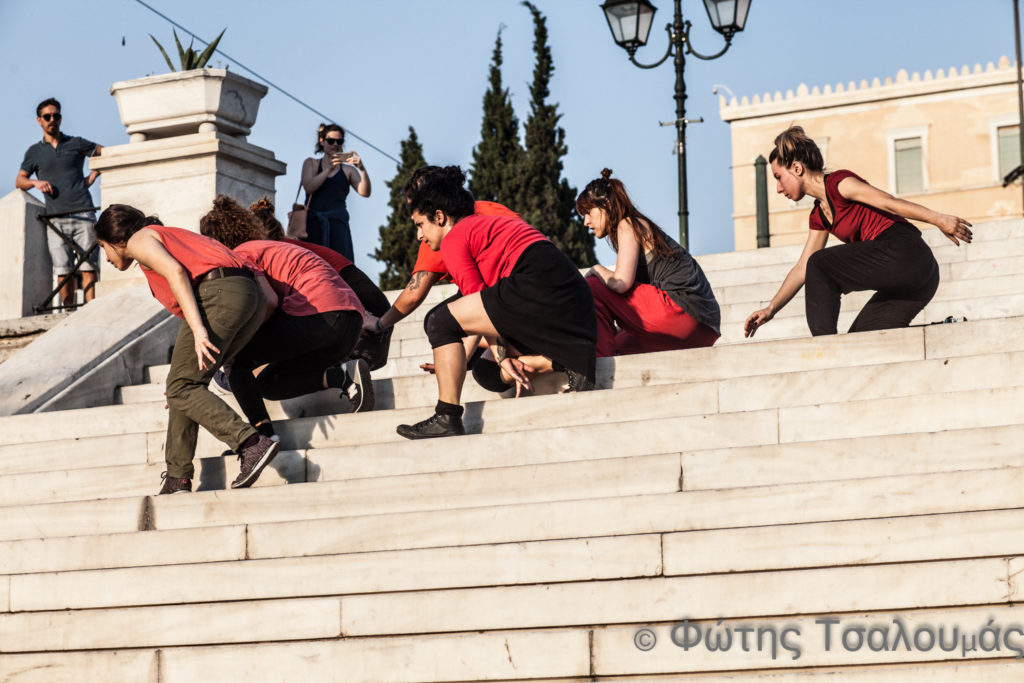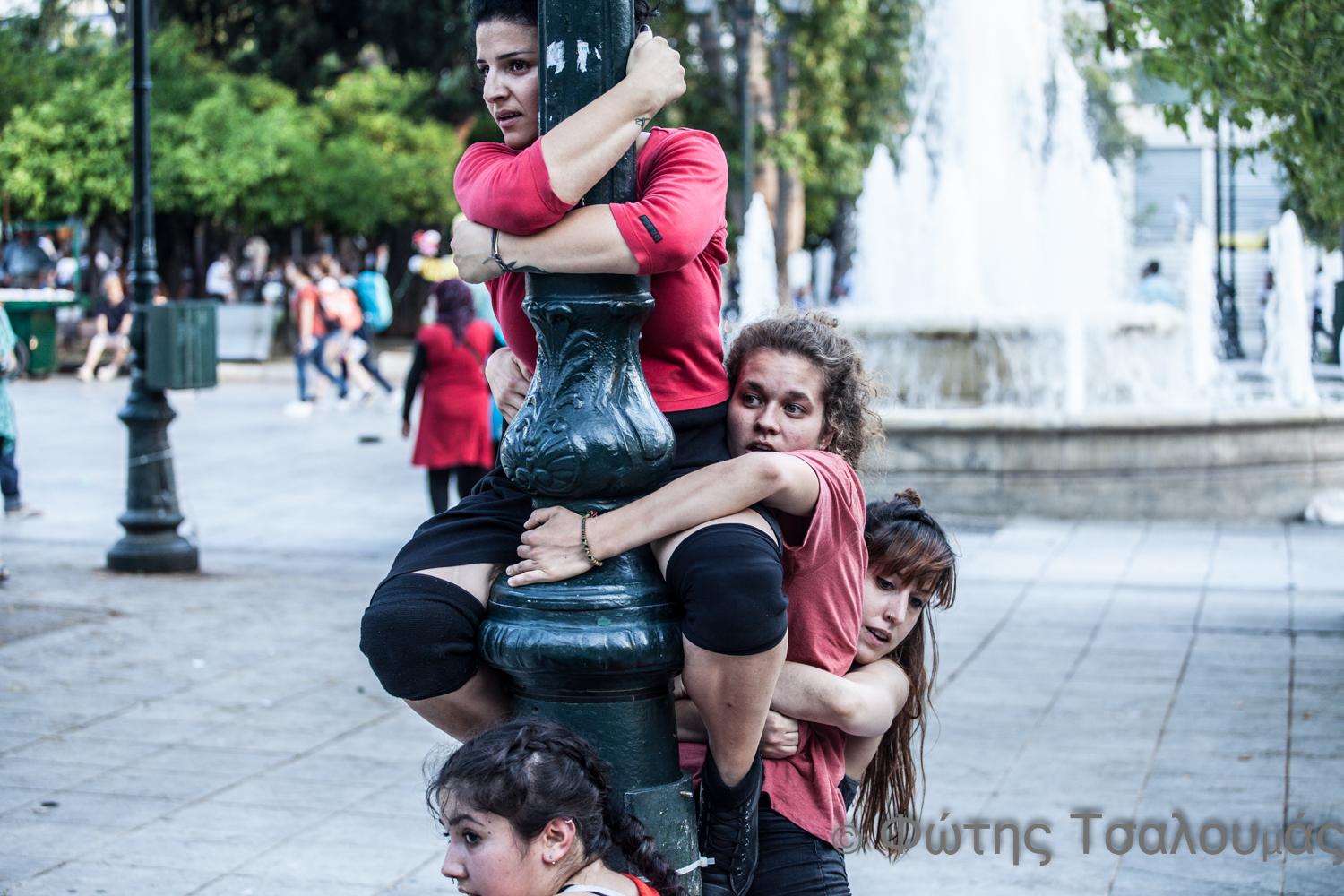Το έργο Home από την ομάδα Almalibre.co της Αναστασίας Μπρουζιώτη και το έργο 2084 από την ομάδα A(r)CT της Ελένης Παπαϊωάννου και του Άλεξ Γκοτς φιλοξενεί από τις 7 έως τις 30 Οκτωβρίου ο Κινητήρας.
Τα δυο έργα διακρίθηκαν στο In Progress Feedback Festival (IPFF) 2017.
Εμείς μιλήσαμε με τις δύο καλλιτέχνιδες για τα έργα τους, που μάλιστα ισοψήφισαν στην πρώτη θέση με βάση το feedback του κοινού, και παρουσιάζονται στον Κινητήρα στην τελική τους μορφή σ’ ένα συναρπαστικό Double Bill.
Λίγα λόγια για την παράσταση που θα δούμε στον Κινητήρα…
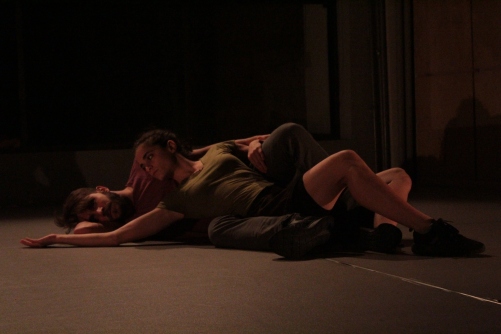
Ελένη Παπαϊωάννου: Το “2084” δημιουργήθηκε μέσα από μια συνεργασία μεταξύ των performers Ελένη Παπαϊωάννου (ιδρύτρια του A(r)CT) και Άλεξ Γκοτς, καθώς και του μουσικού Πάνου Χουντουλίδη και παρουσιάστηκε για πρώτη φορά στο In Progress Festival 2017, όπου κατάφερε να κερδίσει την πρώτη θέση μαζί με την ομάδα Almalibre.co. Το έργο μας αντλεί στοιχεία από το βιβλίο “1984” του Τζορτζ Όργουελ. Η συνεχής προσπάθεια μιας “ανώτερης” δύναμης να καταργήσει κάθε ίχνος διαπροσωπικής σχέσης για να εξασφαλίσει την παντοτινή αγάπη και πίστη προς αυτήν. Δύο άνθρωποι που πέρα από την αγάπη που νιώθουν ο ένας για τον άλλον αγαπούν την ελευθερία. Την ‘μη εικονική’ ελευθερία που ποτέ δεν μπόρεσαν να γευτούν.
Αναστασία Μπρουζιώτη: Tο “Home” είναι μία παράσταση που δημιουργήθηκε με αφορμή τους πίνακες του Egon Schiele και του Edward Hopper. Οι συλλογές που αποτελέσαν την αφετηρία του κομματιού είναι “The Embrace” (The Loving, Ε.Schiele), Cοuple Paintings (1939-1959, E.Hopper) και Social Realism (1928-1947, E.Hopper).
Τι σας ενέπνευσε; Πού στηριχθήκατε;
Αναστασία Μπρουζιώτη: Ο Hopper έχει έναν ρεαλισμό και είναι φοβερά κινηματογραφικός. Η απλότητα, η αρμονία και η ισορροπία που έχουν οι πίνακες του δίνουν πολύ καθαρά την απομόνωση και την μοναξιά που βιώνουν οι χαρακτήρες του, σε αντίθεση με τη έντονη σωματικότητα και την άγρια ομορφιά που έχουν οι χαρακτήρες του Schiele. Η διαφορετική αποτύπωση του κόσμου από τους δύο ζωγράφους αποτέλεσε το ερέθισμα για την δημιουργία του έργου σε κινητικό, χορογραφικό και σκηνοθετικό επίπεδο.
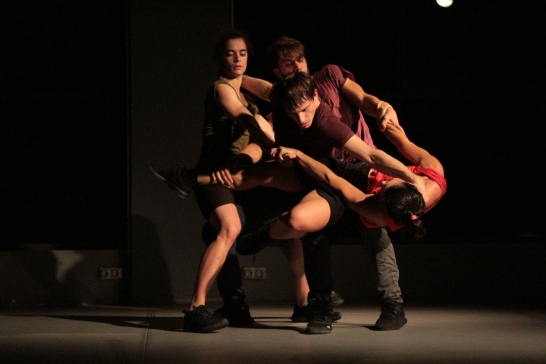
Ελένη Παπαϊωάννου: Το 2084 βασίζεται στην ιδέα πως ο έρωτας μπορεί να αποτελέσει πράξη επαναστατική, πράξη αντιστασιακή και πολλές φορές ριψοκίνδυνη. Χρησιμοποιώντας ως κύρια πηγή έμπνευσης το βιβλίο ‘1984’ του Τζορτζ Όργουελ, το οποίο τύχαινε να διαβάζω εκείνο τον καιρό, θέλησα να αποτυπώσω στη σκηνή την κρυφή σχέση του Γουίνστον με την Tζούλια και την ανάγκη τους να νιώσουν ό,τι το σύστημα απαγόρευε ρητά. Η επίμονη μάχη τους, μέσα από την ‘παράνομη’ αγάπη τους, να νιώσουν ελεύθεροι και να πάνε κόντρα σε όσα η κοινωνία μέσα στην οποία ζουν ορίζει, αποτέλεσε κύριο συστατικό για την ανάπτυξη του έργου. Η θέλησή τους να ελευθερώσουν την φυλακισμένη τους ψυχή, το σώμα και το μυαλό τους αλλά η εν τέλει υποδούλωση και φυλάκιση των ίδιων σε όσα αποφάσισαν να αποστατήσουν λόγω του υπερβολικού τους ζήλου και της έντασης των καταπιεσμένων τους συναισθημάτων και σαρκικών επιθυμιών, προσέφερε σημαντικά δομικά στοιχεία για το 2084. Ο αγώνας αυτών των δύο ανθρώπων που αγαπιούνται ή ίσως έχουν ανάγκη να νιώσουν πως αγαπούν, απέναντι σε μία κοινωνία αποστειρωμένη από κάθε είδους συναίσθημα συντέλεσε στο να αναπτύξω το κομμάτι στα πλαίσια του θέματος “Έρωτας και Επανάσταση”, όπως είχε οριστεί από τον Κινητήρα για το InProgress Feedback Festival 2017. Έχοντας λοιπόν ως σημείο εκκίνησης τις συμπεριφορές των χαρακτήρων του βιβλίου, το περιβάλλον που κινούνται, τις αγωνίες τους, το πάθος, τον ενθουσιασμό τους αλλά και εν τέλει την απελπισία, την απογοήτευση, τον πόνο και την προδοσία που νιώθουν, χτίσαμε αυτό το έργο. Με μία ερώτηση να μας ακολουθεί: ‘Είναι μία επανάσταση βασισμένη στον έρωτα αρκετή να υπερνικήσει ένα υπερφίαλο σύστημα και μία κοινωνία τυφλή;’
Πώς επικοινωνεί με το σήμερα;
Ελένη Παπαϊωάννου: Η ανάγκη μας να είμαστε ελεύθεροι. Να μπορούμε να εκφράσουμε αυτά που νιώθουμε και σκεφτόμαστε, Να ζήσουμε, να ονειρευτούμε, να ερωτευτούμε… Σήμερα, αύριο, χθες. Μέσα σε ένα κόσμο κοινωνικών, πολιτικών, περιβαλλοντικών, ηθικών και ανθρωπιστικών καταστροφών. Μέσα σε ένα κόσμο προσφυγιάς και μετανάστευσης, το 2084 απεικονίζει τον φόβο πως κάποια μέρα θα χάσουμε τη ικανότητα να νιώθουμε, να σκεφτόμαστε και να αγωνιζόμαστε για τον ίδιο μας τον εαυτό, την αξιοπρέπεια μας και τους γύρω μας, για όσα μπορέσαμε κάποτε να ονειρευτούμε.
Αναστασία Μπρουζιώτη: Τα θέματα που ουσιαστικά πραγματεύεται το έργο έχουν να κάνουν με την ελευθερία, την μοναξιά και την καταπίεση. Είναι καθαρά ανθρώπινα θέματα και αυτό τα κάνει αυτόματα και επίκαιρα.
Δικό σας στοίχημα;
Ελένη Παπαϊωάννου: Το προσωπικό μας στοίχημα είναι να μπορέσουμε να επικοινωνήσουμε στους θεατές αυτήν την επιτακτική ανάγκη για συλλογικότητα. Να κάνουμε όσους παρακολουθήσουν το 2084 να νιώσουν ΚΑΤΙ έντονο(και ίσως αποπνικτικό). Να δημιουργήσουμε συναισθήματα, να μπορέσουμε να προβληματίσουμε ως προς το τι συμβαίνει γύρω μας και πως εμείς σαν άνθρωποι τα αντιμετωπίζουμε. Να υπογραμμίσουμε τη σημασία συναισθημάτων όπως η αγάπη, ο έρωτας, η συμπόνοια και η εν συναίσθηση. Αλλά κυρίως να αφήσουμε μία σπίθα που ίσως κάποια στιγμή γίνει φωτιά.
Αναστασία Μπρουζιώτη: Η δημιουργία ενός έργου που κινητική του γλώσσα θα είναι καθαρά εμπνευσμένη από τους χαρακτήρες των πινάκων που με ενέπνευσαν. Επέλεξα να ξεκινήσω από δύο διαφορετικές ατμόσφαιρες και να τις μετουσιώσω σε άλλους κόσμους χρησιμοποιώντας ως εργαλείο το σώμα και την κίνηση αποσκοπώντας στο να μπορέσει ο θεατής οποιαδήποτε στιγμή να « χαθεί» μέσα σε έναν ζωγραφικό πίνακα.
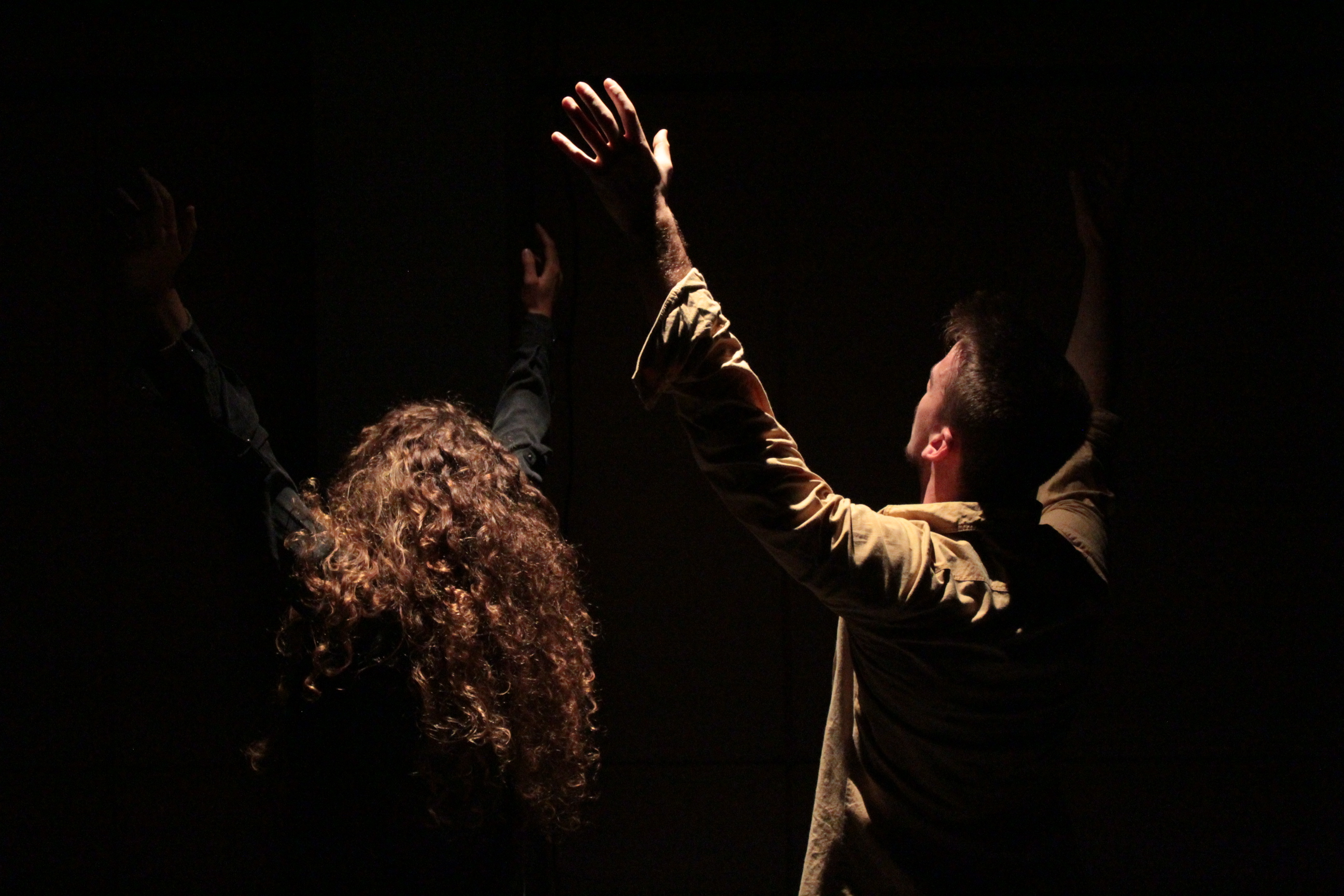
Ποιους καλλιτέχνες του χορού θαυμάζετε ιδιαίτερα και γιατί;
Αναστασία Μπρουζιώτη: Δεν θαυμάζω κάποιους συγκεκριμένους καλλιτέχνες χορού αποκλειστικά. Αυτό που θαυμάζω στον καθένα ξεχωριστά είναι η πίστη και η υπομονή που κάνει κάθε καλλιτέχνης μέχρι να βρει τον δικό του τρόπο να επικοινωνήσει με τον κόσμο. Αυτό είναι κάτι που με μαγεύει σε όλους τους δημιουργούς από την M.Graham, τον M.Cunnigham, την Τrisha Brawn, την Pina Bausch μέχρι τον Hofesh, Arkam Khan, Sharon Fridmanκ.α.
Ελένη Παπαϊωάννου: Είναι πάντα δύσκολο να πρέπει να ξεχωρίσεις κάποιους ανθρώπους μέσα σε ένα χώρο που συντελείται από πολλούς ξεχωριστούς και αξιόλογους καλλιτέχνες του παρόντος και του παρελθόντος. Θα έλεγα πως με συναρπάσει ιδιαίτερα η δουλειά του Akram Khan. Ο συνδυασμός διαφόρων μορφών τέχνης και η ενσωμάτωση του παραδοσιακού ινδικού χορού Kathak στις χορογραφίες του έχει ως αποτέλεσμα ένα ιδιαίτερο και συναρπαστικό τρόπο αφήγησης. Επίσης η δουλειά της αείμνηστης Pina’s Bausch, ιδρύτρια του χοροθεάτρου, που δημιούργησε έργα με χιούμορ, έντονες εικόνες και χρώματα, βγαλμένα από τους ίδιους τους ανθρώπους, μη προσποιητά, εξιστορώντας και απεικονίζοντας τη ίδια τη κοινωνία στη σκηνή, με έχει επηρεάσει πολυεπίπεδα. Τέλος, ο άνθρωπος που θαυμάζω πολύ είναι η Βάσω Κουκάκη, η πρώτη μου δασκάλα χορού, που με την ανεξάντλητη ενέργειά της καταφέρνει να μου υπενθυμίζει πως ο χορός πηγάζει από κάπου μέσα βαθιά. Να νιώθεις είναι να χορεύεις.
Η γλώσσα του χορού πόσο εύκολα γίνεται κατανοητή από το ευρύ κοινό;
Ελένη Παπαϊωάννου: ‘Ο χορός είναι σαν την ποίηση’ έλεγε ο καθηγητής μου Rick Nodine. Είναι μία μορφή τέχνης αφηρημένη, πιο αυθαίρετη. Αυτή όμως η ιδιότητα καθιστά το χορό πιο δυσνόητο και όχι τόσο προσβάσιμο στο ευρύ κοινό. Χορός όμως είναι κίνηση, κίνηση που προέρχεται από το σώμα μας. Ο καθένας κινείται. Ο καθένας από μας αντιλαμβάνεται την κίνηση και νιώθει το ρυθμό. Είναι κάτι πηγαίο, ανθρώπινο. Είναι η πρώτη γλώσσα που μαθαίνουμε, μία γλώσσα παγκόσμια. Έτσι λοιπόν θα έπρεπε να χρησιμοποιείται για να μπορεί να αγγίξει και να μεταφέρει μηνύματα. Να λειτουργεί σα δίαυλος ιδεών και συναισθημάτων. Έτσι μόνο ο χορός κατά την άποψή μου μπορεί να γίνει κατανοητός από το ευρύ κοινό, σαν ένας ειλικρινής, άμεσος διάλογος.
Αναστασία Μπρουζιώτη: Ο χορός είναι μία αφαιρετική τέχνη που συχνά δεν χρειάζεται να αποκωδικοποιηθεί εντελώς. Αυτή άλλωστε είναι και η μαγεία του. Το αν και κατά πόσο θα φτάσει στο κοινό εξαρτάται από την κινητική γλώσσα και τον τρόπο που ο χορογράφος θα επιλέξει να χρησιμοποιήσει, καθώς επίσης από το ποιος είναι ο στόχος του έργου. Αν θέλει να προβληματίσει, αν θέλει να δώσει κάποιο συγκεκριμένο μήνυμα ή αν θέλει αφήσει τον θεατή να ταξιδέψει.
Μελλοντικά σχέδια
Αναστασία Μπρουζιώτη: Τον Νοέμβριο θα ταξιδέψουμε στο Echo Dance Festival στην Ιρλανδία με το έργο “Soul mechanisms/ Journey in the sky” και μετά τα Χριστούγεννα θα ξεκινήσουμε την παραγωγή του νέου μας έργου.
Ελένη Παπαϊωάννου: Μετά το τέλος των παραστάσεων του του ‘2084’ στον Κινητήρα τον Οκτώβρη η ομάδα μας, Α(r)CT, θα συνεχίσει την ερευνά της πάνω στη σχέση του χορού και των δημόσιων χώρων αποσκοπώντας στην υλοποίηση της ιδέας μας πως ο Χορός ανήκει σε κάθε Χώρο και σε κάθε άνθρωπο. Επίσης η ομάδα μας θα συνεργαστεί με το Artfygio διοργανώνοντας εκπαιδευτικά και άλλου είδους προγράμματα στα πλαίσια της συνεχούς μας προσπάθειας να γίνει η τέχνη πιο προσβάσιμη και διαδραστική. Και επειδή μας αρέσει να είμαστε πολυάσχολοι σκοπεύουμε να ξεκινήσουμε ένα καινούργιο κομμάτι με τον Alex Gotch και άλλους performers/χορευτές.
Γεωργία Οικονόμου
tospirto.net
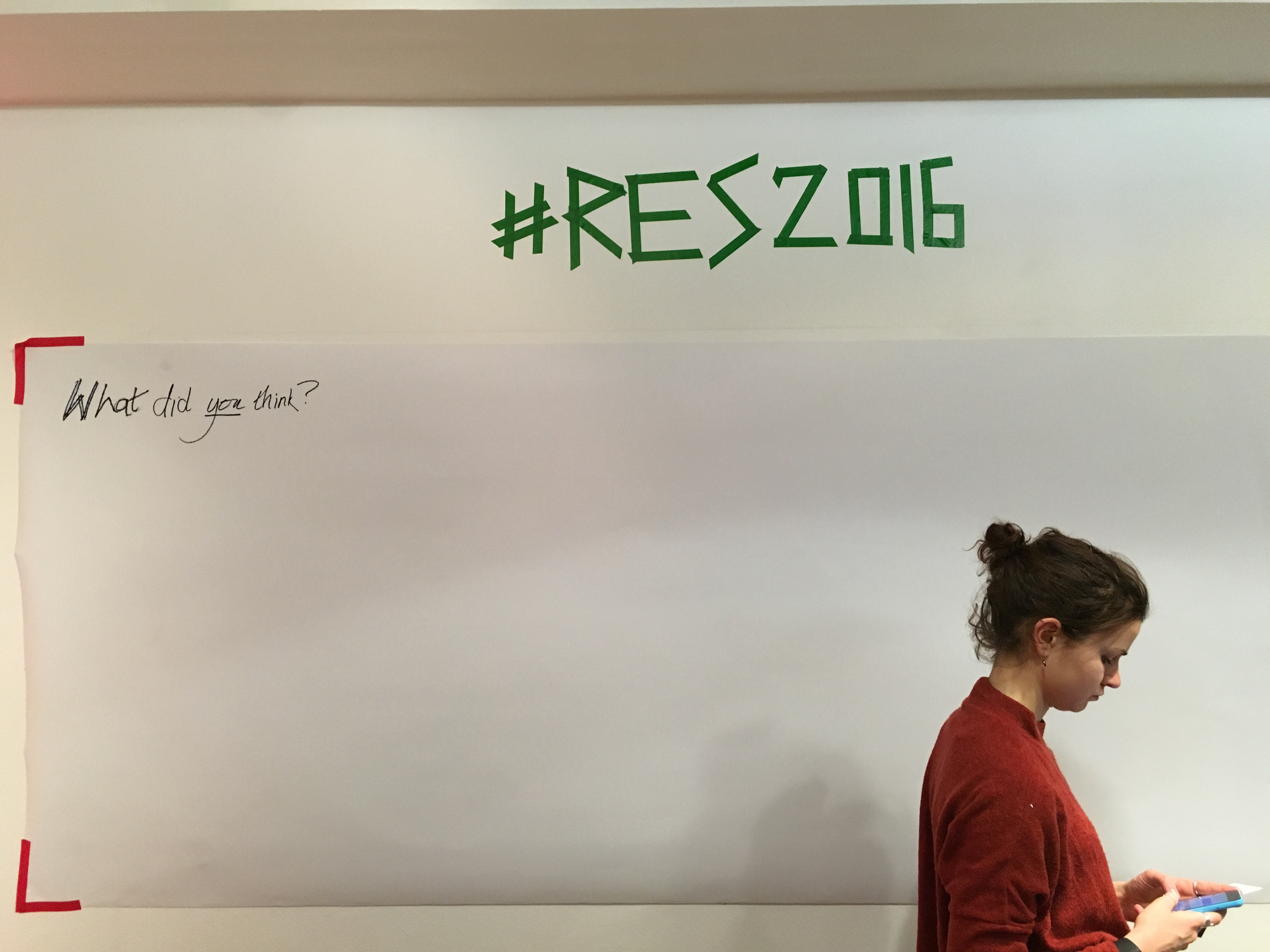
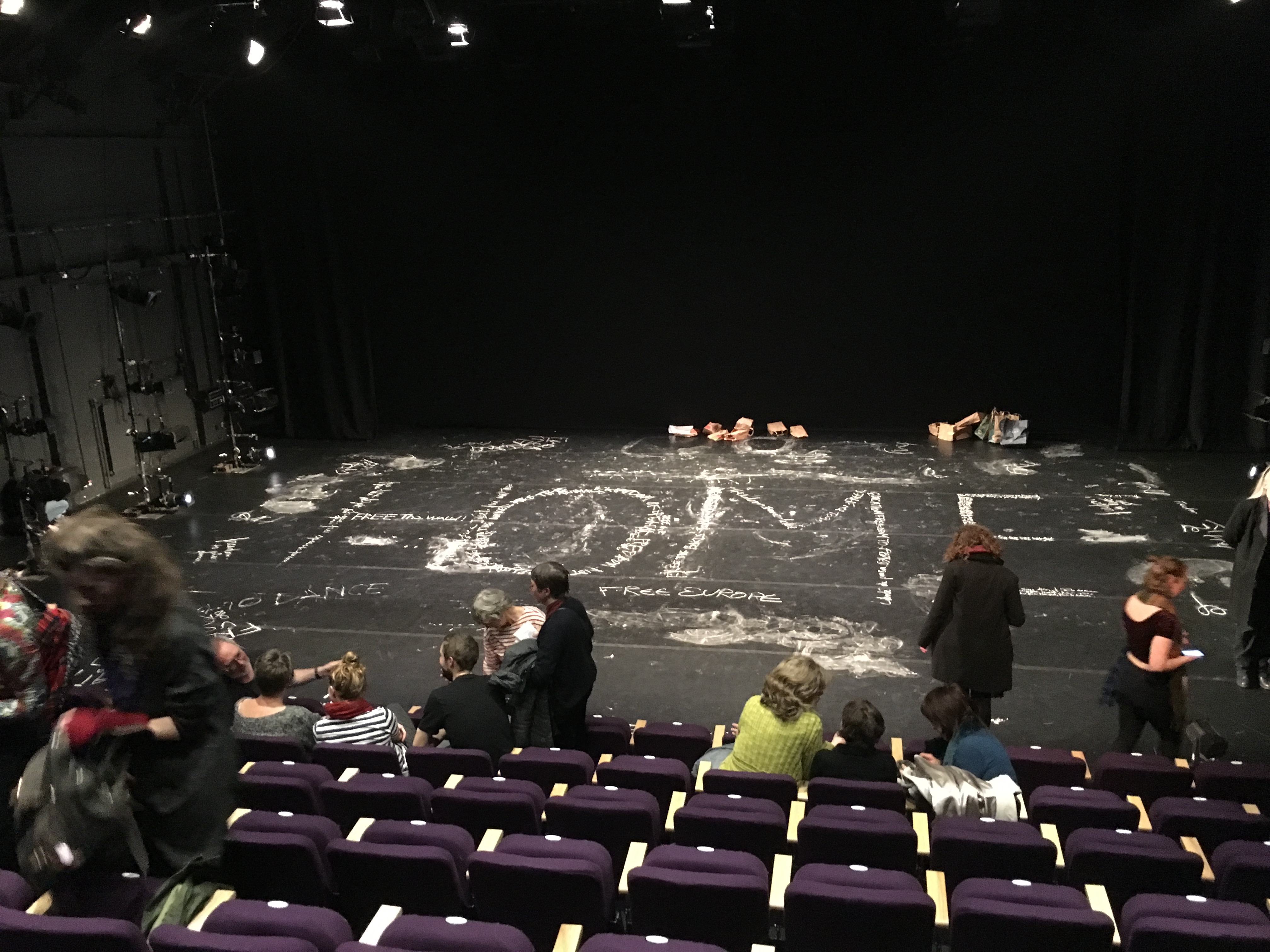











 photograph by Chris Cabral
photograph by Chris Cabral